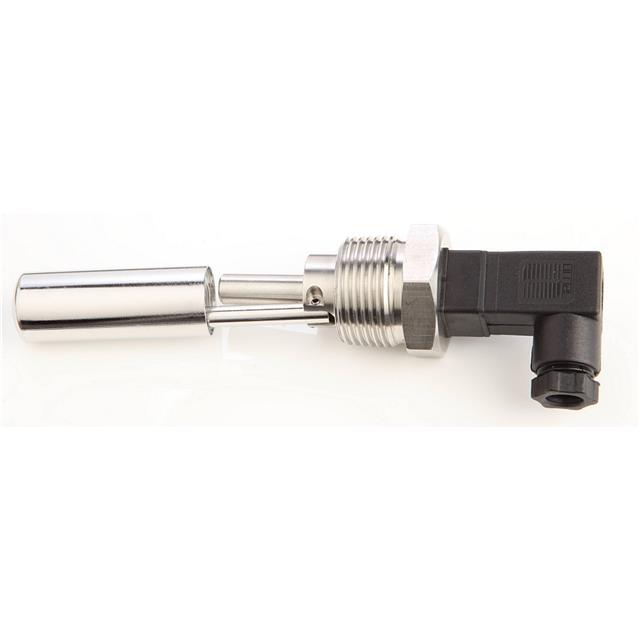

What Audio Transformer is & How it Works
Catalog
Materials and Structure of Audio Transformers Impedance MatchingIsolation or Unity TransformerHow does a radio transformer work?Frequently Asked QuestionsAudio Transformers are cool electromagnetic devices that take input signals and change them into output signals through inductive coupling. Basically, they keep the input and output circuits separate and help filter signals, working within the audible range of frequencies from 20Hz to 20kHz. You’ll find them in places like the input stage (think microphones) and the output stage (like loudspeakers), plus they help with coupling and impedance matching in amplifiers. When using them, it’s important to think about things like frequency response, the impedances of the primary and secondary windings, and how much power they can handle.
Materials and Structure of Audio Transformers
So, a transformer is this electrical device that lets an input signal (like an audio signal or voltage) create an output signal without the two sides being physically connected. It does this by using two (or more) coils of insulated copper wire, called windings, wrapped around a soft magnetic iron core. Typically, audio transformers have copper wire windings around a steel or nickel-iron alloy core. Each type of core material sends electromagnetic signals differently. Steel has more hysteresis, which means it’s better for transferring lower frequencies, while nickel’s higher permeability makes it great for higher frequencies. The way the windings are arranged around the core affects the impedance level, which can increase, decrease, or keep the signal level the same as it moves through the transformer.

Audio Transformer Structure
When a signal comes into the transformer through the input (that’s the primary winding), it gets sent to the output secondary winding thanks to the inductive coupling with the soft iron core. We call the ratio of the number of turns on the primary winding (NP) to the turns on the secondary winding (NS) the “turns ratio.” This ratio decides if the signal will increase or decrease as it moves through the transformer. If there are more turns on the primary, the signal will step down, meaning it decreases. On the flip side, if the secondary has more turns, the signal steps up, so it increases.
So, to sum it up:
- More turns on the input winding? Signal decreases (step down).
- More turns on the output winding? Signal increases (step up).

Audio Transformer Voltage-Current Relationship
Audio transformers are made for different audio tasks, and they’re a lot like power transformers in how they’re built. They can do multiple things at once! You can think of them as step-up or step-down types, but instead of being designed for a certain voltage output, audio transformers mainly focus on impedance matching, isolation, and other uses (like in Data/Voice Coupling Transformers).
Impedance Matching
Just like they adjust voltage and current, transformers can also step impedance up or down. They change voltage based on the turns ratio and current by the inverse of that ratio, but for audio transformers, impedance changes by the square of the turns ratio. The same voltage gets induced in each coil turn of both windings. So, the primary to secondary voltage ratio (VP/VS) matches the turns ratio (NP/NS). When it comes to impedance matching, the ratio between the windings is always based on the square of the turns ratio. Basically, the impedance ratio equals the turns ratio squared, and it’s also equal to the primary to secondary voltage ratio squared.

the impedance ratio equals the turns ratio squared
Impedance is all about how well voltage gets converted into magnetic flux. Audio transformers are great for balancing amplifiers and loads that have different input and output impedances, which helps in getting the best power transfer. For example, you’d use a transformer at the amplifier’s input to match the impedance between microphones, connecting cables, and the amp itself. By matching the input and output impedance levels, you create efficient power transfer without distortion or signal overload.
Impedance matching transformers look a lot like low-frequency voltage and power transformers, but they work over a much wider range of frequencies—like from 20Hz to 20kHz, which is the voice range.
Isolation or Unity Transformer
Another cool thing about transformers is their isolation feature. Because there’s no direct electrical connection between the primary and secondary windings, they give complete electrical isolation between the input and output circuits. This is super useful for separating amplifiers from speakers, too. A transformer with a turns ratio of 1:1 doesn’t change voltage or current levels; it just isolates the primary circuit from the secondary side. We usually call this kind of transformer an isolation transformer.

Isolation Transformer
Since the impedance is the same for both the primary and secondary, the signal level stays the same. The transformer lets an audio signal pass through unchanged from the primary to the secondary while blocking DC voltage and any radio frequency interference (RFI). Because the primary and secondary circuits are insulated from each other, the transformer provides electrical isolation between different pieces of equipment. This can help eliminate hum problems by isolating or "lifting" the grounds of various devices. Other uses for unity transformers include providing multiple outputs from a single mic input by using several secondary windings and changing balanced signals to unbalanced ones, or vice versa.
Audio transformers are made to work within the audio frequency range, and even higher for radio-frequency (RF) transformers. One of the main downsides is that, because of this wide frequency range, audio transformers can be a bit bulky and pricey. This happens because the size of the transformer’s core needs to increase as the supply frequency goes down. You can get smaller designs by using special core materials.
Audio transformers have been really important since the early days of audio electronics. Compared to modern miniaturized electronics, they might seem big and heavy, but they’re still the best solution for many audio applications. The cool thing about transformers is that they can transfer electrical energy from one circuit to another without any direct connection, and during that process, the energy can easily be changed from one voltage level to another.
How does a radio transformer work?
A transformer is an electrical device that lets an AC input signal (like audio) create a related AC output signal without the input and output being physically connected. It does this by having two (or more) coils of insulated wire wrapped around a magnetic metal core.
Frequently Asked Questions
What are audio transformers used for?
So, at their core, audio transformers have a primary and secondary winding wrapped around a magnetic core. They help transmit sound signals from one winding to the other with great accuracy and very little distortion.
What’s the difference between an audio transformer and a power transformer?
Audio transformers have a wider frequency response and a specific primary/secondary impedance, which makes them better at maintaining signal integrity and optimizing power transfer compared to regular power transformers.
What can audio transformer models pick up?
Our findings show these models can really capture a bunch of different traits, like audio quality, fluency, pronunciation nuances, and even some text-based stuff like syntax and meaning.
Who makes the best audio output transformers?
Lundahl Transformers is a top-notch manufacturer known for their high-performance transformers for audio applications.
Can you use a transformer as an audio amplifier?
You can totally use it as an audio voltage amplifier or a current amplifier, but don’t try using it as a power amplifier. Like others have said, a transformer is a passive device and does have some losses, so the output power is always gonna be less than the input power.
Why do old speakers have transformers?
Well, in a constant-voltage speaker system, the amplifier uses a transformer to boost the voltage of the audio signal. This helps cut down on power loss over the speaker cable, so you can transmit more power through a certain wire size.
Why use an audio isolation transformer?
An audio transformer helps reduce or block signals that fall below or above the audio range of 20 to 20,000 Hz. Whether that’s a drawback or a plus really depends on the situation. One other thing to keep in mind is that audio transformers have a maximum input level. If you go over that, you’ll end up with a distorted signal.
Subscribe to JMBom Electronics !













